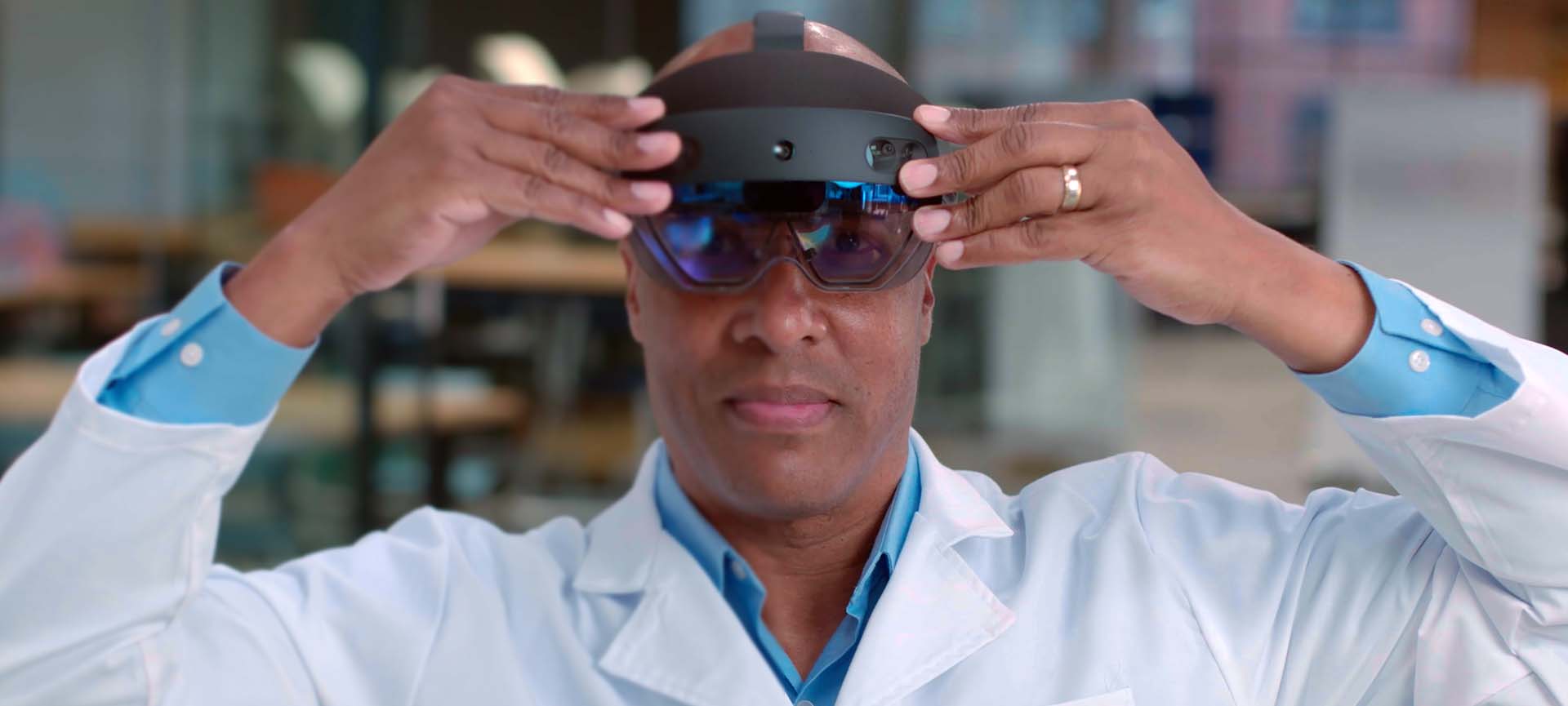Welcome to part five in our blog series that looks at some of the ongoing and emerging trends across Augmented Reality, Virtual Reality, and Mixed Reality - collectively referred to as XR. This post looks at XR’s usage throughout the healthcare industry and medical field, and how the technology is being used to help drive advancements in patient care, from diagnosis and surgery to aftercare.
XR technology has already carved out its own piece of the healthcare market by providing a range of innovative solutions that benefit hospitals, doctors, surgeons, first responders, trainee medical staff and other healthcare professionals.
Companies like Magic Leap for example have actually begun to put a lot of focus on catering to the healthcare market by launching programs that grant healthcare technology companies access to their spatial computing hardware. Some of the solutions that these companies are coming up with include data visualization and 3D anatomy mapping, Mixed Reality surgical navigation solutions that provide methods for reviewing surgical plans and collaborating with other medical staff, as well as insights into patient procedures, and even actual diagnostic solutions that utilize XR hardware to help diagnose patients with vision and vestibular disorders.
There is a growing trend of Augmented Reality technology being used during surgery too, with several surgeons opting to augment their field of view with AR hardware in order to see patient vitals, and in some cases, even “X-Ray vision” of a patient’s detailed internal soft tissue, organ, vascular and skeletal structures.
Virtual Reality too has its uses when it comes to the preparation phase of surgery. In fact, in 2021, VR was used to help in the surgical planning for a procedure to separate two twins who were born fused together at the head. Digital twins of the conjoined twins were viewed in VR prior to the procedure, in order to give surgeons greater understanding and advanced insights to analyze critical blood vessels and plan for the end goal of safely separating the twins.
A big part of how both AR and VR are being used with such success by healthcare professionals is the fact that there are now ways to create accurate 3D models of patient’s and their anatomical functions. Companies such as 3dMD are providing doctors and dentists with detailed 3D representations of anthropometric data that can be used to help medical staff assess, quantify, and measure shape change in a patient’s anatomical function, movement, pose, posture, communication, and expression.
There is also a growing market for VR on the patient aftercare and rehabilitation side of things too. With standalone VR headsets becoming relatively inexpensive these days, it is much more feasible for hospitals to justify spending part of their budgets on VR hardware that can be reused by multiple patients for at-home rehabilitation needs. Many platforms also offer remote management options, and can ultimately provide hospitals with a cheaper (but equally useful) alternative to providing an in-person rehabilitation appointment. Plus, more and more XR therapy systems are becoming clinically validated and registered by the US Food and Drug Administration (FDA).
Finally, XR offers a much more cost effective and convenient solution for medical training, as it provides a risk-free environment in which students can learn. For instance, practicing a surgical procedure and building confidence in VR carries no inherent risk, as there are no patient lives at stake if things go wrong. However, students are still able to learn from the mistakes made during a VR procedure, with the technology also allowing qualified surgeons to either sit-in or analyze footage afterwards in order to offer guidance to students.
Furthermore, VR doesn’t require an entire operating theater like conventional surgical training methods do. Instead, students can study from their own home. Companies such as Xennial Digital and Tipping Point Media are providing medical institutions with development and educational solutions for training medical staff. For more on Virtual Reality training, see our previous blog post (4/12) on ‘How XR Is Enhancing Education And Training’.
The “Healthcare & Wellness” track at AWE USA is one of the best ways to see first how Augmented, Virtual and Mixed Reality are being deployed across the healthcare industry. Speakers from leading healthcare and XR organizations will be demonstrating the myriad ways that Augmented and Virtual Reality technology is being used to improve physical and mental health and wellness.
Some of the best talks that will cover XR in healthcare at AWE USA this year include:
- Disease Awareness Through Experiential Virtual Reality
- The Use of Virtual Reality at the University of Pennsylvania Cancer Center
- NASA Medical Training, Branching Narratives, and Volumetric Video
- Virtual Reality Therapy and Family Intervention: Research Findings and Practical Recommendations
- VADER: Using AR and VR Technology to Create a Physical-to-Virtual Collaboration Space for Remote Surgical Assistance and Training
Header image source: Tipping Point Media, LLC



